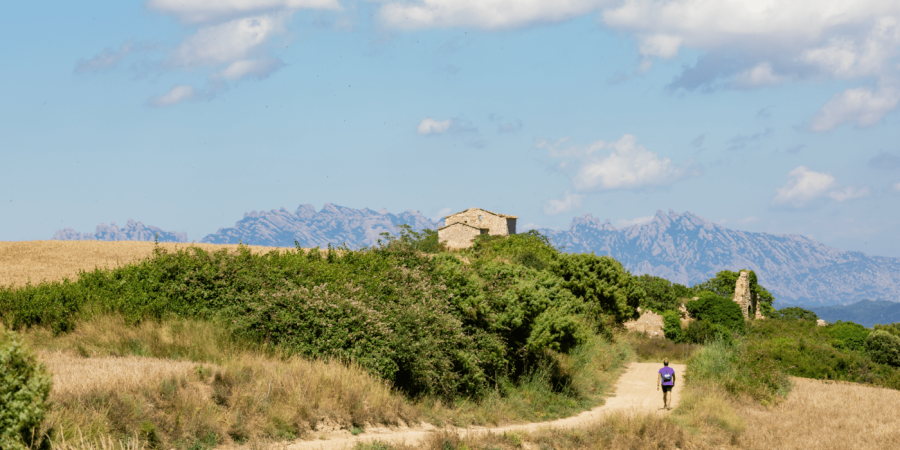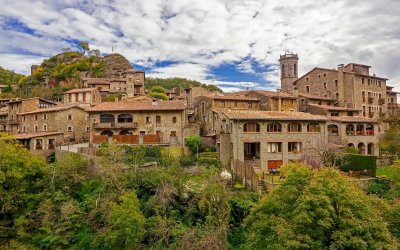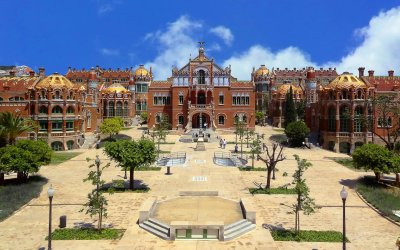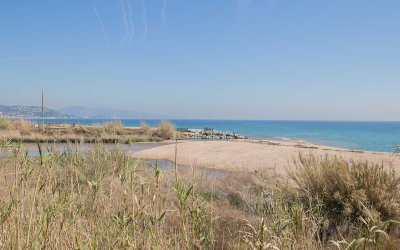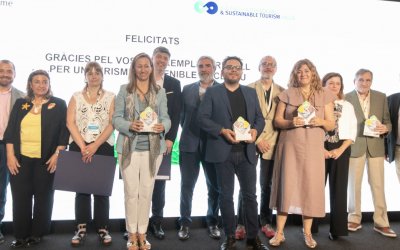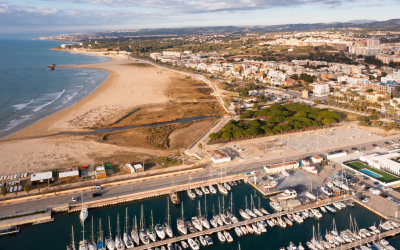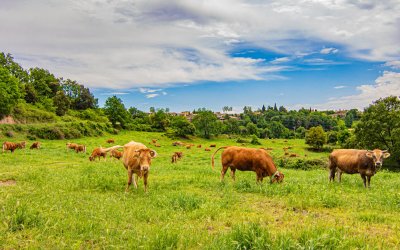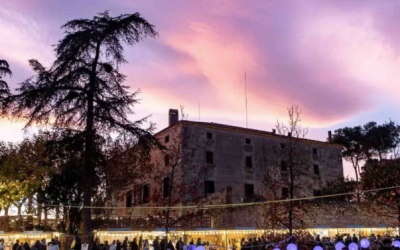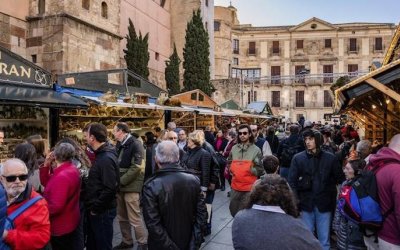A region waiting to be discovered, Anoia is a pleasant surprise for visitors with the wide range of activities it offers, from cycling and hiking to unique experiences such as diving into natural pools and taking in gorgeous waterfalls.
The area’s treasures lie in its nature but also in its culture. And what better way to experience it up close than through its markets, such as the Fira del Camí Ral fair in Vilanova del Camí or the Fira de la Candelera in Pobla de Claramunt, events rich in tradition.
But if there’s one thing the region is known for, that’s palaeontology. its landscape, full of fossils, has led to the creation of the CRIP, the Palaeontological Restoration and Information Centre in Hostalets de Pierola.
This site is famous worldwide thanks to findings such as the Pierolapithecus catalaunicus, colloquially known as Pau. The remains of this primate are the first known link on the evolutionary chain leading to orangutans, gorillas, chimpanzees and humans.
The CRIP uses this collection of fossils, one of the most extensive in the world, for outreach work that seeks to preserve this heritage so that future generations can enjoy it.
Different activities steeped in history
Anoia also offers some truly unique activities. For example, there is the final stretch of the Ignatian Way, a spiritual and athletic journey that consists of travelling in the footsteps of Ignatius of Loyola as he underwent a profound transformation.
Sites where you can reach out and touch the passage of time. Small villages surrounded by countryside and shaped by industry. The route can wind up at the Cal Maco Ignatian Visitor Centre in Igualada, which also serves as a hostel for pilgrims, and where you can learn about several initiatives having to do with the saint’s life.
If you are interested in further exploring the region’s religious aspects, there is nothing better making it to Art Ecclesia, the Anoia Religious Heritage Visitor Centre. You will find it in the tiny village of Segur in the municipality of Veciana, specifically in the old Santa Maria church.
This is a special place where you can embark on a journey into the religious heritage of the region from the Romanesque to the Barroque, all that while enjoying the breathtaking views from the Calaf plateau.
From here, you can visit Sant Pere de l’Arç, a Barroque gem hidden amongst the paths of Calonge de Segarra, an unexpected reward for those who visit this small church.
And the trip back in time does not end here. Anoia Patrimoni can help you find the itinerary that best suits your interests. For example, you can discover the region’s medieval past with castles such as Mirambell, Òdena and many more, as well as urban centres from the same period such as El Bruc, Copons, Igualada and La Pobla de Claramunt.
Then you can jump forward in time to the industrialisation period of the 19th century, and learn about the region’s mining past. In areas such as Alta Segarra, at one point there were more than 250 coal mines, which changed the landscape of the region.
You can see what is left of this history at Mina Vicenta, which was operational for nearly a century and which was the first lignite mining site to be recovered in the region, and at Mina Asunción, a unique mine where you can learn about the challenges faced by those involved in this industry in Anoia.
So what are you waiting for? Anoia is a region full of secrets to be discovered and perfect for the whole family.
